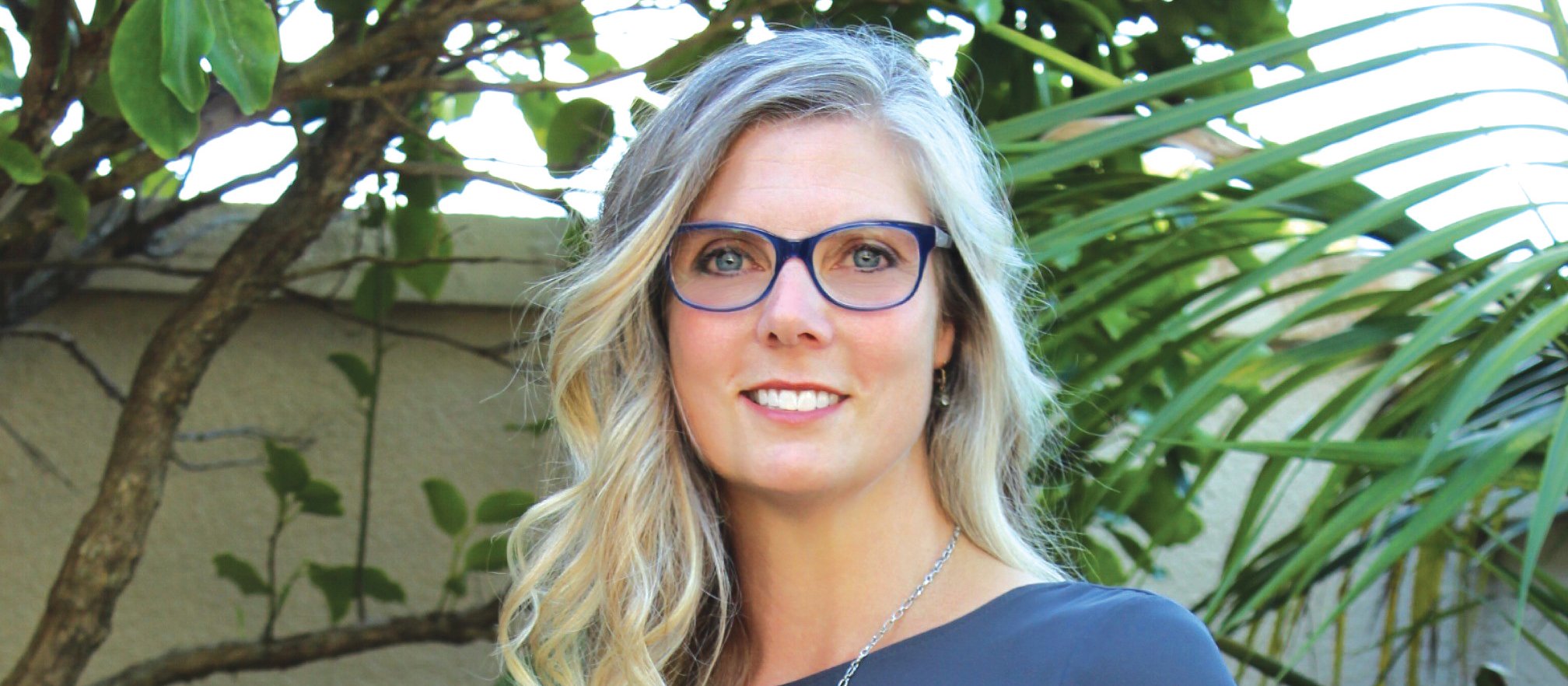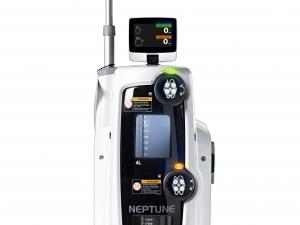Respiratory physician Lutz Beckert considers chronic obstructive pulmonary disease management, including the prevention of COPD, the importance of smoking cessation and pulmonary rehabilitation, and the lifesaving potential of addressing treatable traits. He also discusses the logic of inhaler therapy, moving from single therapy to dual and triple therapy when indicated, as well as other aspects of management
Nurse, farmer turned health leader
Nurse, farmer turned health leader

Vanessa Neven has gone from living in a yurt and sustainably managing a Canadian farmlet to a modest house with a small section in Orewa, north of Auckland.
It was time for a change for Ms Neven and family. “We were exhausted, so we chose low maintenance.”
Job and education opportunities attracted them to New Zealand and, two years ago, when leading strategic initiatives at Southern Cross Healthcare, she was invited to start as the company’s national sustainability lead.
From nursing, growing vegetables and running farm tours, while bringing up four daughters in an isolated setting, Ms Neven has switched to a less busy urban life but a full-on job.
Threading sustainability throughout Southern Cross Healthcare is only half of her role, the other half being jointventure support manager, allied health.
In her first year, Ms Neven wrote the company’s sustainability strategy and set about communicating it to colleagues. Buy-in from the board and executive leadership team has been crucial to spreading the word and helping people to look at “everything we do through a sustainability lens”.
"It takes time and finesse,” she says.
The Government brought in public sector carbon-emissions requirements that don’t cover operators like Southern Cross Healthcare.
But the private sector can’t get off scot-free: “We (in New Zealand) have what is considered a dirty environment because we’re polluting it. It doesn’t matter if you’re private or public.”
Ms Neven set in train the collection of carbon emissions data from the 10 wholly owned hospitals and head office.
“[This] is no small undertaking with 42 various emission sources and over 26 various waste streams at each hospital,” she says.
At each one, “green teams” champion sustainability and roll out initiatives to reduce carbon footprint.
Even as staff were deep in COVID-19 crisis mode, Ms Neven says, the Christchurch facility’s three diesel boilers were switched to lowercarbon-emitting LPG. Lighting is being swapped from standard to LED throughout the hospitals and energy use moderated via timing systems.
PVC, aluminium canisters and metals, cardboard, plastics, glass and batteries are kept out of the waste stream and recycled. Some single-use items are “remanufactured” by Medsalv for reuse (see “Kiwi company aims to change minds about ‘single use’ medical products”, page 12). Waste Management takes laparoscopic surgery tools; the metal can be reused.
Other efforts have included:
- HVAC systems being programmed for different seasons and after hours
- less use of high-emitting desflurane in theatres
- reusable sharps containers, keeping 3.91 tonnes of plastic out of landfill
- biodegradable and compostable aprons; compostable trays, denture cups, lids, kidney dishes, drinking straws and cups (and more).
Ms Neven says Southern Cross Healthcare achieved a 9.8 per cent reduction in carbon emissions intensity (emissions per $1 million of total revenue) in the 2020/21 year compared with the baseline 2019/20 year.
The intensity result reflects that, although the business kept growing and had a 5.4 per cent larger footprint, it was not emitting carbon at the same rate as previously.
Southern Cross Central Lakes Hospital opened in Queenstown late last year. The building:
- sets a benchmark for energy use in New Zealand hospitals, public and private
- aims at the lowest carbon emissions of any Southern Cross hospital, while maximising daylight, indoor quality and external views, and
- has more than double the thermal efficiency required by the New Zealand Building Code for healthcare buildings. The hospital is a joint venture between Southern Cross Healthcare and the Central Lakes Trust.
We're publishing this article as a FREE READ so it is FREE to read and EASY to share more widely. Please support us and the hard work of our journalists by clicking here and subscribing to our publication and website







![Barbara Fountain, editor of New Zealand Doctor Rata Aotearoa, and Paul Hutchison, GP and senior medical clinician at Tāmaki Health [Image: Simon Maude]](/sites/default/files/styles/thumbnail_cropped_100/public/2025-03/Barbara%20Fountain%2C%20editor%20of%20New%20Zealand%20Doctor%20Rata%20Aotearoa%2C%20and%20Paul%20Hutchison%2C%20GP%20and%20senior%20medical%20clinician%20at%20T%C4%81maki%20Health%20CR%20Simon%20Maude.jpg?itok=-HbQ1EYA)
![Lori Peters, NP and advanced health improvement practitioner at Mahitahi Hauora, and Jasper Nacilla, NP at The Terrace Medical Centre in Wellington [Image: Simon Maude]](/sites/default/files/styles/thumbnail_cropped_100/public/2025-03/2.%20Lori%20Peters%2C%20NP%20and%20advanced%20HIP%20at%20Mahitahi%20Hauora%2C%20and%20Jasper%20Nacilla%2C%20NP%20at%20The%20Terrace%20Medical%20Centre%20in%20Wellington%20CR%20Simon%20Maude.jpg?itok=sUfbsSF1)
![Ministry of Social Development health and disability coordinator Liz Williams, regional health advisors Mary Mojel and Larah Takarangi, and health and disability coordinators Rebecca Staunton and Myint Than Htut [Image: Simon Maude]](/sites/default/files/styles/thumbnail_cropped_100/public/2025-03/3.%20Ministry%20of%20Social%20Development%27s%20Liz%20Williams%2C%20Mary%20Mojel%2C%20Larah%20Takarangi%2C%20Rebecca%20Staunton%20and%20Myint%20Than%20Htut%20CR%20Simon%20Maude.jpg?itok=9ceOujzC)
![Locum GP Helen Fisher, with Te Kuiti Medical Centre NP Bridget Woodney [Image: Simon Maude]](/sites/default/files/styles/thumbnail_cropped_100/public/2025-03/4.%20Locum%20GP%20Helen%20Fisher%2C%20with%20Te%20Kuiti%20Medical%20Centre%20NP%20Bridget%20Woodney%20CR%20Simon%20Maude.jpg?itok=TJeODetm)
![Ruby Faulkner, GPEP2, with David Small, GPEP3 from The Doctors Greenmeadows in Napier [Image: Simon Maude]](/sites/default/files/styles/thumbnail_cropped_100/public/2025-03/5.%20Ruby%20Faulkner%2C%20GPEP2%2C%20with%20David%20Small%2C%20GPEP3%20from%20The%20Doctors%20Greenmeadows%20in%20Napier%20CR%20Simon%20Maude.jpg?itok=B0u4wsIs)
![Rochelle Langton and Libby Thomas, marketing advisors at the Medical Protection Society [Image: Simon Maude]](/sites/default/files/styles/thumbnail_cropped_100/public/2025-03/6.%20Rochelle%20Langton%20and%20Libby%20Thomas%2C%20marketing%20advisors%20at%20the%20Medical%20Protection%20Society%20CR%20Simon%20Maude.jpg?itok=r52_Cf74)
![Specialist GP Lucy Gibberd, medical advisor at MPS, and Zara Bolam, urgent-care specialist at The Nest Health Centre in Inglewood [Image: Simon Maude]](/sites/default/files/styles/thumbnail_cropped_100/public/2025-03/7.%20Specialist%20GP%20Lucy%20Gibberd%2C%20medical%20advisor%20at%20MPS%2C%20and%20Zara%20Bolam%2C%20urgent-care%20specialist%20at%20The%20Nest%20Health%20Centre%20in%20Inglewood%20CR%20Simon%20Maude.jpg?itok=z8eVoBU3)
![Olivia Blackmore and Trudee Sharp, NPs at Gore Health Centre, and Gaylene Hastie, NP at Queenstown Medical Centre [Image: Simon Maude]](/sites/default/files/styles/thumbnail_cropped_100/public/2025-03/8.%20Olivia%20Blackmore%20and%20Trudee%20Sharp%2C%20NPs%20at%20Gore%20Health%20Centre%2C%20and%20Gaylene%20Hastie%2C%20NP%20at%20Queenstown%20Medical%20Centre%20CR%20Simon%20Maude.jpg?itok=Z6u9d0XH)
![Mary Toloa, specialist GP at Porirua and Union Community Health Service in Wellington, Mara Coler, clinical pharmacist at Tū Ora Compass Health, and Bhavna Mistry, specialist GP at Porirua and Union Community Health Service [Image: Simon Maude]](/sites/default/files/styles/thumbnail_cropped_100/public/2025-03/9.%20Mary%20Toloa%2C%20Porirua%20and%20Union%20Community%20Health%20Service%20in%20Wellington%2C%20Mara%20Coler%2C%20T%C5%AB%20Ora%20Compass%20Health%2C%20and%20Bhavna%20Mistry%2C%20PUCHS%20CR%20Simon%20Maude.jpg?itok=kpChr0cc)